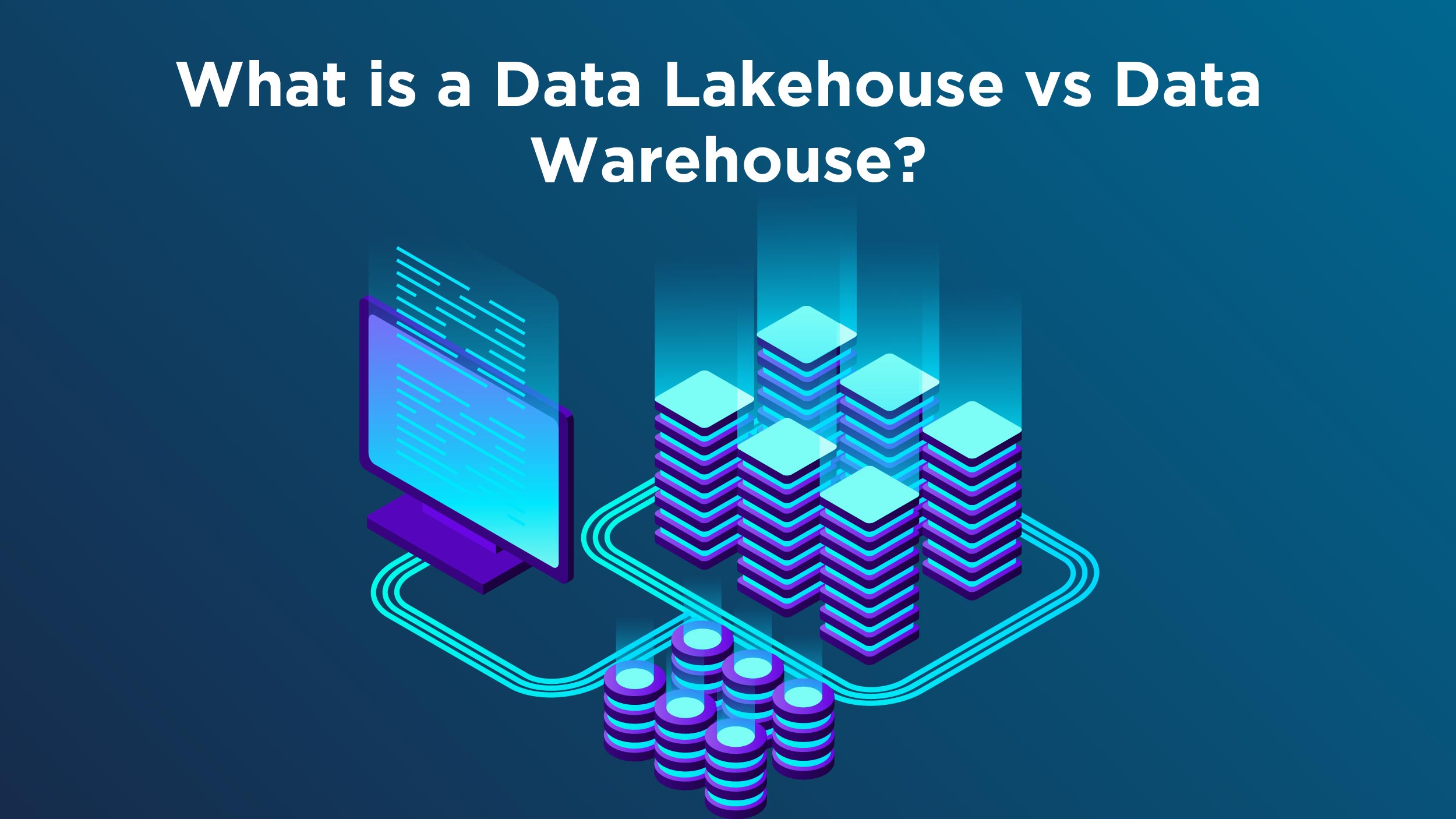In today’s data-driven world, organizations face the challenge of managing and analyzing vast amounts of diverse data efficiently. Traditional data architectures struggle to handle the volume, variety, and velocity of data. This is where the concept of a data lakehouse comes into play. By combining the best features of data lakes and data warehouses, a data lakehouse provides a unified and scalable solution for storing, processing, and analyzing data. This article discusses exactly this.
What is Data Lakehouse?
A data lakehouse is an innovative data management framework that integrates the pivotal advantages of both data lakes and data warehouses. It’s tailored to overcome the inherent limitations of relying solely on either data lakes or data warehouses.
By consolidating the flexibility, cost-effectiveness, and scalability inherent in data lakes with the robust data management features and ACID (Atomicity, Consistency, Isolation, Durability) transactions of data warehouses, a data lakehouse offers a unified platform. This platform enables organizations to efficiently store and analyze a wide array of data types, ranging from structured to unstructured and semi-structured data.
What are the benefits of Data Lakehouse?
 A data lakehouse amalgamates the prime features of data warehouses and data lakes, yielding numerous advantages:
A data lakehouse amalgamates the prime features of data warehouses and data lakes, yielding numerous advantages:
- Robust Data Governance: Compared to conventional data warehouses, a data lakehouse boasts enhanced data governance. It implements stringent controls over data access and modifications, thereby fortifying data security and compliance measures. A recent report revealed that within three years, 70% of respondents anticipate that over half of all analytics will be conducted on the data lakehouse.
- Flexibility: It excels at storing and analyzing vast quantities of both structured and unstructured data. This adaptability proves invaluable for organizations managing extensive databases and seeking insights from diverse data formats.
- Performance and Optimization: By merging the performance and optimization prowess of data warehouses with the flexibility of data lakes, these lakehouse facilitates data integration, high-performance, and low-latency queries. This capability accelerates the data analysis process significantly.
Also Read: Cloud Computing Security: A “Cloud” Full of Possibilities and Risks
- Agility: Data teams experience increased agility, eliminating the need to navigate multiple systems for data access. By providing a consolidated platform for data storage, processing, and analysis, it expedites insight generation and decision-making processes.
- Cost-effectiveness: Leveraging economical storage solutions like cloud computing, and lakehouses enables organizations to curtail storage expenses while accommodating burgeoning data volumes.
- Advanced Analytics: Organizations can undertake advanced analytics tasks encompassing machine learning, data science, and business intelligence across all data types. This fosters deeper insights and facilitates informed decision-making.
- Data Freshness: Integrating data lakes and data warehouses ensures teams have access to the most comprehensive and up-to-date data for their analytics endeavors, enhancing the relevance and reliability of insights generated.
What is a Data Lakehouse vs Data Warehouse?
 A data lakehouse emerges as a modern data management architecture, blending the strengths of data warehouses and data lakes. Conversely, a data warehouse represents a traditional data storage system primarily tailored for structured and semi-structured data.
A data lakehouse emerges as a modern data management architecture, blending the strengths of data warehouses and data lakes. Conversely, a data warehouse represents a traditional data storage system primarily tailored for structured and semi-structured data.
Here’s a breakdown of the key distinctions between the two:
- Data Types: Data warehouses cater mainly to structured and semi-structured data, whereas lakehouses accommodate both structured and unstructured data formats without constraints.
- Data Structure: Data warehouses adhere to a predefined schema and data structure, whereas lakehouses offer more flexibility. Data in a lakehouse can reside in its raw state, transforming as necessary for analysis.
- Scalability: Leveraging the scalability of data lakes, lakehouses enable organizations to handle unlimited data volumes. In contrast, data warehouses may encounter scalability limitations and might require additional infrastructure for managing large datasets.
- Data Governance: While both data warehouses and lakehouses prioritize data governance, warehouses typically come with well-defined governance processes and controls. Lakehouses also offer robust governance features but may necessitate additional setup and management compared to traditional warehouses.
- Analytics Support: Data warehouses excel at structured data analytics and business intelligence tasks. In contrast, data lakes support a broader spectrum of analytics, encompassing machine learning, data science, and real-time streaming analytics.
- Cost-effectiveness: Lakehouses leverage cost-efficient storage solutions like cloud object storage, leading to reduced storage expenses. On the other hand, warehouses may involve higher infrastructure and licensing costs.
- Maturity: Data warehouses boast a long history of usage with established best practices. Conversely, lakehouses, being a newer architecture, are still evolving, with early adopters sharing emerging best practices as the framework matures.
What is the difference between Delta Lake and Data Lakehouse?
Delta Lake and Data Lakehouse are related but distinct concepts. Delta Lake is a technology developed by Databricks that enhances data lakes with features like ACID transactions and schema enforcement. It addresses the limitations of traditional data lakes and ensures data integrity and reliability. On the other hand, a lakehouse is a broader data architecture that combines the benefits of data lakes and data warehouses. It provides a unified platform for storing, processing, and analyzing various types of data. Delta lake can be used as part of a lakehouse architecture to add reliability and performance enhancements to data lakes.
What are the Key Features of Data Lakehouse?
By merging the robust data structures of warehouses with the affordability and adaptability of lakes, it offers a platform for storing and accessing large volumes of data efficiently. This approach not only facilitates quick access to big data but also helps in addressing potential issues related to data quality.
One of the key advantages is its ability to handle diverse types of data, including both structured and unstructured formats, catering to the requirements of various business intelligence and data science tasks. Moreover, it supports popular programming languages such as Python, R, and high-performance SQL, ensuring compatibility with different analytical tools and workflows.
These are equipped to handle ACID transactions, which ensures the integrity of data operations, particularly on larger workloads. ACID transactions guarantee properties like atomicity, consistency, isolation, and durability, which are essential for maintaining data reliability. For instance, atomicity ensures that all data changes are treated as a single operation, consistency ensures that data remains in a stable state throughout a transaction, isolation prevents interference between concurrent transactions, and durability ensures that completed transactions are permanently recorded, even in the event of system failures. This capability is crucial for maintaining data consistency and reliability, especially in environments where multiple users are accessing and modifying data simultaneously.
How Does Data Lakehouse Work?
To understand how a lakehouse operates, it’s essential to grasp its core objectives. Essentially, it seeks to consolidate diverse data origins while streamlining technical processes, enabling all members of an organization to harness data effectively.
A data lakehouse leverages the cost-efficient cloud object storage characteristic of data lakes, facilitating seamless provisioning and scalability. Much like a data lake, it serves as a repository capable of accommodating vast amounts of raw data across various formats.
However, what sets it apart is its integration of metadata layers atop this storage infrastructure. These layers imbue the lakehouse with warehouse-like functionalities, including structured schemas, support for ACID transactions, data governance mechanisms, and other optimization features essential for effective data management. This amalgamation of capabilities enables the lakehouse to bridge the gap between raw data storage and sophisticated analytics, empowering users across the organization to derive actionable insights efficiently.
What are the Challenges Faced by Data Lakehouse?
Storage Layer: This layer serves as the foundation, housing all raw data within the data lake. Typically, it utilizes a low-cost object store capable of accommodating various data types, including unstructured, structured, and semi-structured datasets. Importantly, it operates independently from computing resources, allowing for scalable computing capacity.
Staging Layer: Positioned atop the storage layer, the staging layer functions as the metadata hub. It furnishes a comprehensive catalog detailing all data objects stored within the system. This layer facilitates essential data management functionalities such as schema enforcement, ensuring data integrity, and optimizing access through features like indexing, caching, and access control mechanisms.
Semantic Layer: Serving as the interface for end-users, the semantic layer, often referred to as the lakehouse layer, provides access to curated and processed data. Users interact with this layer using client applications and analytics tools, leveraging the available data for experimentation, analysis, and presentation in business intelligence contexts.
End Note
Data lakehouse is an innovative data management architecture that combines the flexibility and scalability of data lakes with the data management capabilities of data warehouses. It offers a unified platform for storing, processing, and analyzing all types of data, including structured, unstructured, and semi-structured data.
































